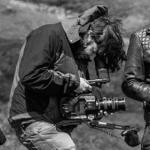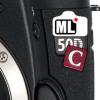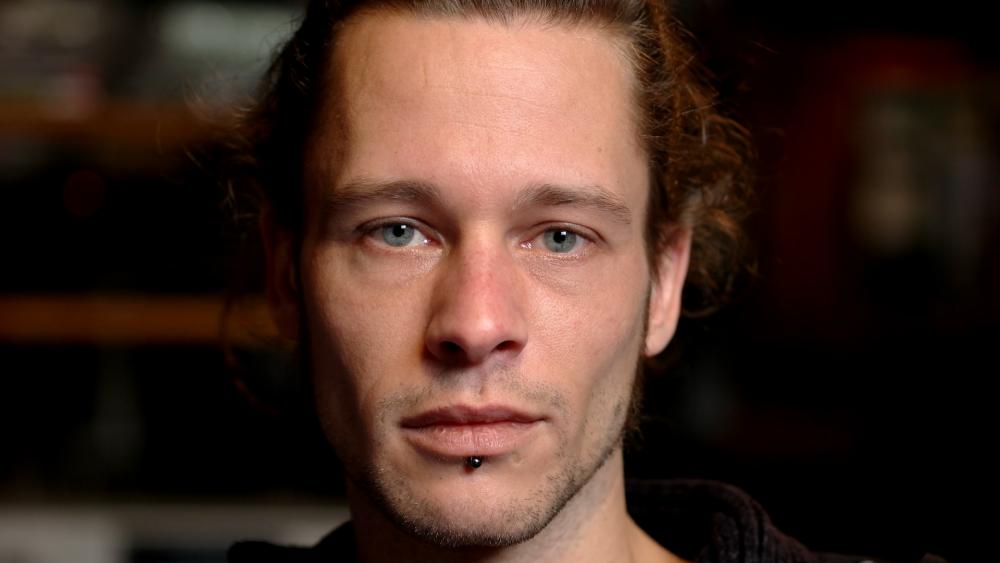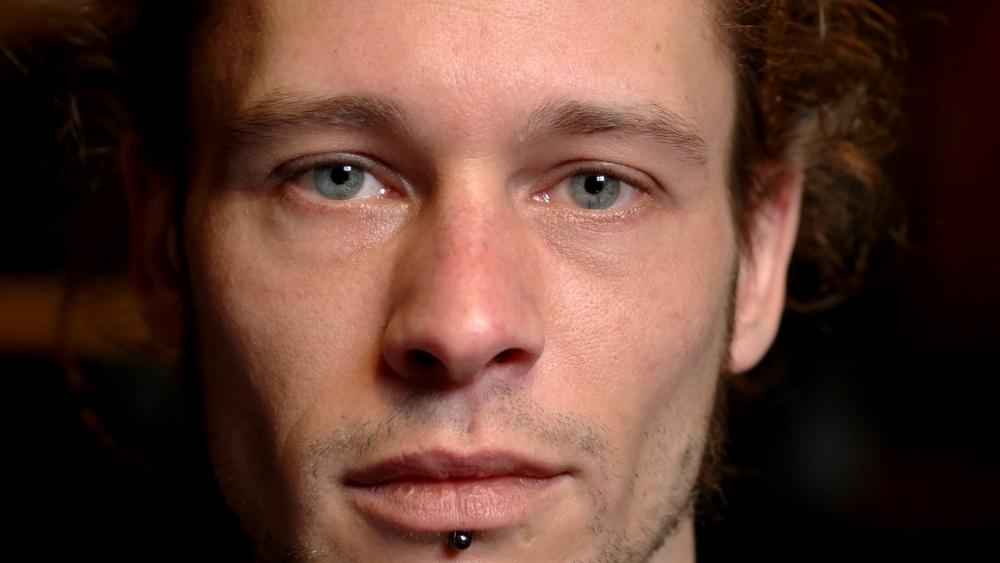Leaderboard
Popular Content
Showing content with the highest reputation on 02/19/2016 in all areas
-
Un-foogin-believable. The rendering of the smoke was like nothing I've seen before - looked like it was going to come right out of my screen. This 8k thing is a whole new world for Documentaries, educational, and other types of super-realism stuff. But I'm becoming more convinced than ever that 4k is the cutoff for "Movies". It's just too sharp and it starts hurting the feel of the experience instead of helping. In fact the 2.8k Alexa or even the 2.5k Blackmagic Cinema Camera are about all I'd want to deal with if the intention is something that "looks like a movie". But it's interesting - we now have cameras so advanced that they are creating new genres. That's fantastic. And the ability of 5k, 6k, and 8k to convey a realistic experience is a gift to Humanity. As a teaching and world-sharing tool there has never been anything like it before. There is very much a parallel in Music recording. - Audio technology has advanced just like video technology has, but when the audio you want to make is MUSIC then the new advanced tech sounds 'worse' and everybody reaches for "tube this" and "tube that" and "tube emulators"... all that DEGRADES the audio - but it does it in a very specific way that just so happens to sound "better" to most people in the context of songs. So "movie" cameras will be the ones that render a technically less advanced image - but one that is far more suited to the particular application of creating a "movie". Interesting times.5 points
-
http://www.samsung.com/semiconductor/products/cmos-image-sensor/camera-cis/S5KVB2?ia=218 Says 25fps for the full sensor. That means about 9ms per line, which results in about 30ms minimum frame time for a 16:9 crop. Hence the 30fps maximum for UHD and 30ms rolling shutter that was measured by both Cinema5D and some guy on DVXuser. That also lines up with the 1080p rolling shutter and maximum frame rate measured in various places. The predicted speed in the closest binning level to 720p is also about 200fps based on that time per line, which is what Cinema5D saw on the pre-production NX500. Continuous shooting at 15fps is also consistent with that readout speed. Yes, I know a Samsung marketing guy said otherwise in an interview, but I'm not convinced he really knew what he was talking about. I think it is more likely that after a long corporate game of "telephone" the actual numbers got mistaken. It's the word of one marketing manager in an interview vs the official product information published by Samsung Semiconductor and all the specifications and measurements taken of the camera that match that number. The Nikon j5 is a good example of what it actually looks like when a fast sensor is limited by a slow processor. The sensor does over 5k at 60+fps, but the processor will only handle UHD at 15fps. However the rolling shutter is still excellent, since the first step of the image processing pipeline is to just dump the raw readout to RAM, which is more than fast enough. It can do continuous shooting at the full speed of the sensor since it doesn't use a mechanical shutter in that mode, and they didn't decide to limit it. I see no reason for Samsung to go to all the effort to build a CMOS sensor capable of 10x the clock speed they run it at in their flagship product, then lie about the actual capabilities on the product page. Furthermore there is no CMOS circuit I have ever heard of that can be overclocked by 1000%, even under laboratory conditions (liquid nitrogen, etc), so I am somewhat skeptical that they ran the thing at 240fps in testing. The live view is derived from the raw sensor data. The question is where the boundary between the ARM cores and the special purpose hardware is in the image processing pipeline. Magic Lantern RAW video works because they found that Canon's live view mode puts the raw sensor data somewhere the general-purpose processor can access it before de-bayering it and sending it to the screen or to HDMI as RGB video. Nikon does it the same way, as shown by the Nikonhacker developers. I don't know how Samsung does it, but it is quite likely to be like Canon and Nikon.5 points
-

Dog Schidt Optiks meets my BMPCC
Liam and 3 others reacted to Zak Forsman for a topic
wait, what's this?!?!?4 points -
Here is from last summer a little test between FM Lens and Rectilux adapters. Kowa 8z inside on both.3 points
-
Though the whole marketing seems to be focusing on the fact that its 8k. to those who look at it properly it's all about the fact that it's a scaled up dragon sensor. so all the magic from the 6k dragon, but with much more sensor area meaning the larger format look is possible. a 35mm f1.4 lens can be used to get the same fov as a 25mm f1.4 lens, with the associated advantages such as better lens performance, shallower dof when needed etc. It's not that the 8k is making this stunningly clean image 'pop' it's the fact that the camera was being shot with the forefront of full frame glass (otus) - using longer focal lengths than would be used if it were the 6k dragon sensor. there are no s35mm lenses that can be used wide open at f1.4 and deliver such optical resolution and that separation between in and out of focus areas we see here. I'm certain that if Sony made a pro version of the a7s, with 4;4:4 or proper xavc intra onto cfast2 keeping the 4k res, and you shot with otus lenses the image would have the same perceived resolution. I see the power of a full frame sensor and superb optics outputting raw as the big thing here. not that it's 8k. I expect if that sensor were 2k it would still look as good.3 points
-
Petition for Samsung NX1 hack
Marco Tecno and 2 others reacted to Syme for a topic
I just realized the Tizen git repository (https://review.tizen.org/git/) includes open-source code for libmm-camcorder, which seems to have all the same functions as libmmf-camcorder.so on the NX1. Not sure what the difference is. Looks like this is a goldmine for understanding what the camera app is doing. I'm glad I found it before I started digging into the libmmf-camcorder.so binary. There is also a repository for a default camera app, which doesn't seem to be the same as on the NX1, but if we're lucky they might be closely related.3 points -

EOS 80D - HDR Video?
IronFilm and 2 others reacted to Andrew Reid for a topic
Unfortunately not quite D5300 / GH3 good. Canon's new APS-C sensor doesn't have the moire & aliasing control of the former or the resolution / sharpness of the latter. D5500 even better as it has the lovely flat profile and newer sensor, very very clean in the shadows. Canon continue to disappoint - the 80D is basically a non-event, when it could have been a game changer.3 points -
Seems Sigma has done it again: http://www.sonyalpharumors.com/leaked-first-picture-of-the-crazy-sigma-50-100mm-f1-8-lens/ Yet another uniquely fast zoom (for crop). You guys excited? I know I am :-) Now let's wait for RRP2 points
-
As usual, the Sony has some flashy specs, but the Panasonic will be more usable.2 points
-

RED "weapon" 8K footage
TheRenaissanceMan and one other reacted to Nikkor for a topic
"Lenses. Heh, when I picked up Jarred's camera I thought immediately about which glass I was going to use. I ended up slapping all sorts of lenses on the camera that evening during prep. I went rogue and went with EF glass. Mostly Zeiss Otus and a few Milvus shots in there. The Otus primes look fantastic on this camera FYI. I also used 30-40 year old Olympus OM lenses I had Duclos Lenses Cine-Mod which have a bit of history in the world of VistaVision filming. The major macro shots for instance were the Olys. There was a 200mm f/2.8 Canon prime used as well. Overall I shot mostly at f/2, though there's a fair amount of f/1.4 and f/2.8 in there with a couple f/5 shots. I had the camera in very precarious situations. Literally on a grinder belt or having 2000 degree bits of steel being shot on the camera. As you can see from some of the images I used the Bright Tangerine Misfit Atom with optical clear filters to protect the lens and camera. Though I can't say the optical clear filters survived. They were pitted with metal bits as was my skin."2 points -
bahahaha! the rudolph hat scene at 1:25... you've done it again Canon2 points
-

Sony a6300 4k
Phil A and one other reacted to TheRenaissanceMan for a topic
The NX1 can also do 4K/30p. Hard to imagine the A6300 could do 4K/60p in a larger body when it can't top 25p in the current one without a significant sensor crop. I'd be more than okay with a beefier body from Sony a la GH4/NX1. Better heat dissipation, better processing, better battery life (if they stopped using the pathetically weak fw50 in everything).2 points -
RED "weapon" 8K footage
Ed_David and one other reacted to Mattias Burling for a topic
I think its a bit of a generation thing. A guy I have working with me is 10 years younger than me (im 33). Both me and him are movie fans, we both saw H8 in 70mm. Both of us use analog film for our stills. I use medium format and he shoots large format and is getting into wet prints. We share similar tastes in other vintage stuff, we like the same movies, video games, etc. But we differ on one subject. He loves the look of Loord of the rings, CGI, 48fps, sharp sharp images etc. I like practical effects, film, 24p etc. And when we argue about it, its clear to me that we simply don't see the same thing. When I point at the bear in the new dicaprio movie and say "look how fake" he just scratches his head. He has no idea what Im on about. When I used Jurassic Park as an example of practical vs cgi, he thinks they look equally good. He is simply used to it. That's what movies have looked like all his life. He doesn't remember the pre digital era. Another example is dubbing. When Im in Germany I think, "how can they watch this, I mean its so badly done its comical?". Then I ask a german friend, "What do you mean, its in perfect synk and the voice matches spot on, no one could ever tell the difference". They are used to it. Ok, totally off topic from the Weapon. But a thought On topic, It looked stellar but Im not blown away. URSA 4.6k, Dragon, Weapon, Tomato, Tomaato.2 points -
Yeah, I think we all would like to see some clips of Dog Schidt all over that Alexa. Or should I say... That Alexa stepped in some Dog Schidt.2 points
-
I did read otto k's posts. Currently I'm going about things from another angle, but there is definitely some interesting stuff there. Running scripts on the card would be the first step on the way to getting root. Alright, now time for some unfounded wild speculation =) As far as USB 3.0 RAW goes, it really depends on a lot. Keep in mind I have no idea how to actually do any of this; I'm just considering the capability of the hardware. First of all USB 3.0 cannot achieve 5Gb/s in real life. The real maximum data transfer is somewhere around 3.6Gb/s after the overhead is removed. Even then most implementations of USB 3.0 are a lot slower. Point Gray, a machine vision camera company did some extensive testing in which they found the maximum transfer rate with various computers and USB 3.0 cards, so if you want to know more, google that. Fortunately with custom drivers the integrated USB 3.0 ports on modern Intel processors appear to be just barely fast enough for 12 bit 4k RAW at 24fps. However the implementation of USB 3.0 on the NX1 isn't guaranteed to be fast enough, since not all USB 3.0 devices are. Someone would have to test. The other high bandwidth external interface on the NX1 is HDMI, which has a maximum pixel clock of 340Mhz. That would be enough for 6.5k 12 bit 24fps RAW video if it were possible to pack two 12 bit pixels into each RGB444 pixel like Apertus is trying on their cameras. Of course it is possible that the NX1 doens't support the full bandwidth of HDMI 1.4, in which case the maximum rate we know it can handle is 3.40Gb/s for DCI 4k 422. That is less than the theoretical bandwidth of USB 3.0, but it is completely stable and guaranteed, unlike USB, and it would be enough for 5k at least. It would require a custom FPGA-based recorder to capture it (or support from Convergent Design or Atomos), but that's a lot easier than making a fully custom camera. There are some big fundamental issues hanging over either strategy for RAW video. The first is whether or not the general purpose processor can actually access the raw sensor readout at full resolution. That isn't necessary for the normal operation of the camera, so there is no guarantee it's possible. If the general purpose ARM cores in the DRIMEv5 can't even access the raw data coming off the sensor, neither strategy would work. The other big question I can think of is what layout the data would come in memory if the ARM cores can in fact access it. If it is packed tightly it might be possible to just pass that buffer to the GPU and tell it to treat it as 24bpp RGB, or just copy it out the USB port as fast as possible. The wimpy little ARM cores are probably fast enough for that. On the other hand it might be aligned to 16bit boundaries for fast memory access to each pixel, in which case it would have to be packed tightly before transmitting it. I'm not sure if the general-purpose cores can do unaligned memory accesses or bit-packing operations fast enough (but again I'm no expert). Magic Lantern found that the processor in a Canon camera isn't fast enough to convert 14 bit to 12 bit at just 720p24. Actually on second thought the GPU might require 24bpp RGB to be padded out to 32bits, in which case some messy unaligned copying would be unavoidable. Back to more realistic considerations, that Tizen emulator might be good for testing what the menues do. It probably could't emulate the camera-specific low-level stuff, but that doesn't mean it's not useful. I might get there eventually. Currently I'm working on unpacking the NX500 firmware to compare it to the NX1, but I'm pretty busy with the work I'm actually supposed to be doing, so I'm not going to be making any rapid progress.2 points
-
Great topic guys. Vimeo started this shit almost 3 months ago and have changed nothing significant. In various topics on their forum, I have posted over 15 times stating my unhappiness with the current system. First in kind words, later in more clear language. And lately just fucking rude but who gives a shit. I'm bored with them and the fact that they don't take their paying customers, like me, seriously. They have put fingers in their ears and are singing 'lalalala, Adaptive Streaming is great, lalala'. In their latest update they even say literally 'STUDIES HAVE SHOWN THAT AS IS GREAT'. Lol. Just a big lol. We all agree on the flaws of this system and how it can harm us video producers, but you know what's even a better argument? They are actually already experimenting on our business for the last 3 months. Without any notice or offering any alternative, they just implemented this shitty system. Still the first 10 seconds of all my video's start in 360p. Still, sometimes DURING playback, the resolution changes to 360p. Why didn't they test this system on their own shitty video's first and implemented it when it was 100% functional? Nope, they just wanted to test it in the field I guess. On my films. It's outrageous, really. Everbody, cancel your subscriptions right now. Stop the auto-renewal of your membership right now. It's the only way how they might ever consider changing some stuff back and giving us some control back. They don't listen to our words but they will listen to money. If you want to make a point, stop your membership right now. It has more effect than just complaining. Believe me, I tried.2 points
-
The real suprising champ is the RX100IV - the slow motion out of this guy is beautiful. I am shocked by how good it came out. Mixed F35, A7S, everything - especially at the waterpark.1 point
-
details: http://www.reduser.net/forum/showthread.php?141427-FORGED-Shot-on-RED-Weapon-8K1 point
-
"Infinite" is not a word that can really be applied to any aspect of any camera or lens. It's not that they make the image or the lens better - it's that they increase your incoming light by at least one full stop - that's A LOT - and they widen the field of view of the lens you're using. This is exactly the same effect as a). using a faster lens, b). having a larger sensor that does significantly better in low light. c). in many instances any focal reducer will have the effect of slightly sharpening the image - it's an optical property of a focal reducer. It's not a lot, but it's there. No. Not "hands down". That's just you own opinion - and everyone will have them. Very very few people who have used both say that about the GH4. I've used both and I completely disagree with that. The ONE big thing misleading people to think that is the SAMSUNG lenses are very clinical and can give a more "video" look. But there's no reason that you have to use those. I don't even own one.1 point
-

EOS 80D - HDR Video?
Eno reacted to Oliver Daniel for a topic
The first camera I ever bought was the Canon XHA1s and the the 60d. At the time I was gobsmacked by the entire DSLR video thing. Now I realise Canon were never really using their stills models to appeal to video professionals. None of their DSLRs have ever had basic video features.... even the 1DC. Canon want video professionals on their C-series, and it's as simple as that. Sony offer ridiculous specs and give you everything as if it's a laugh, even if it means a little overheating. Or shitty colour. I like Sony. They will get better with the nitty gritty. They are a sensible system to buy into. On big commercial sets, if I ever see a DSLR it's the 5D III. And the C300. Saw an FS7 once. And the JVC LS300 for that matter! I like Canon's reliability and pleasing images though and I bloody hope they would give their low to mid lineup more attention with video, but it's not going to happen. (Or save up and get a 1DX II + 6 million hard drives). Meanwhile... Panasonic, Sony and Blackmagic all offer many solutions for us video nuts that offer a lot for every little. The only thing holding you back these days is yourself. On a positive note to the 80d, I'd rather use this or any Canon for stills than any other brand. They just look better, don't they?1 point -
Lenses
Henry Gentles reacted to Antonis for a topic
1 point -

Confessions of a former A7r2 hater...
Mattias Burling reacted to Nikkor for a topic
Imho, if you want a sony, get the A7sii, slog 3 really looks good to me, slog 2 from the A7s is either horrible or I don't know of any good workflow (plus shogun sucks)1 point -
RED "weapon" 8K footage
Ed_David reacted to Mattias Burling for a topic
The force is strong with this one.1 point -

Sony a6300 4k
elgabogomez reacted to Andrew Reid for a topic
That's very speculative about the 4K 60fps. Hardly think Sony is protecting the FS7. As an FS5 owner and A7S II owner I can say the consumer line already comes dangerously close to the point of toppling the image quality of their pro cameras. The A6300 is far better than the NX500. No sensor crop. LOG. Likely better low light. 6K readout. Speed Booster. I think it will outperform the NX1 or be very similar, let's wait and see... Not long now.1 point -

RED "weapon" 8K footage
1tkman reacted to AaronChicago for a topic
I agree as of February 2016. I'm starting to wonder though. Guardians Of The Galaxy 2 is shooting with the Weapon, and I know alot of big budget movies will follow suit. I think in a few years the hyper-realistic look will be accepted and requested. Of course there will be alot of people who are nostalgic and want the old film look. Most likely myself included. Curious to see what the "standard" will be in 2020.1 point -
Blackmagic Micro Cinema Camera
richg101 reacted to Mattias Burling for a topic
Hyper focal distance. This is old school stuff. My mostly used stills camera is a Medium Format Zeiss with no viewfinder what so ever. Doesn't stop me Im sure they aren't talking about it as the only way and only camera to use. Just a bit of fun.1 point -
Sony a6300 4k
Marco Tecno reacted to Mattias Burling for a topic
Doubt it, Sony have heat issues. If size is what matters I agree, but if one just wants a s35 4K camera I think one definitely should look t the much cheaper NX1.1 point -
RED "weapon" 8K footage
Nikkor reacted to Mattias Burling for a topic
I thought that goes without saying.1 point -
Hahahaha! That's them totally NOT UNDERSTANDING what you're telling them! "No, no, no dude...there's no 'technical difficulty'...everything's working fine. But the way you've just changed it to work is not the product I signed up and paid for!" Head...brickwall...head....brickwall...1 point
-

Dog Schidt Optiks meets my BMPCC
mercer reacted to Zak Forsman for a topic
belongs to a friend of mine. he's a DP and invited me over to have a look. he's only had it a couple days. shot a few clips. plan to do more in a couple weeks after it comes back from a rental.1 point -

Pentax K-1 - 36 MP Full Frame DSLR
Zach Ashcraft reacted to richg101 for a topic
I expect they are using the sony 36mpx sensor as used in the d800 and a7rmk1. a stunning sensor - imo actually a little nicer than the new sony 42mpx. the fact that they're providing a nice solid 14bit file it'll likely be closer to the d800's image than the a7r was. add all the bells and whistles and the only thing I'd be complaining about is the pentax mount!1 point -
Neat video is a great solution and the value for the money is impressive. Want some tips? Any shoot that you fear dealing with noise - high ISOs or deep shadows - shoot a second or so of a flat surface, not overly dark or bright (no channels clipped. so avoid intense colors), the more it fills the frame the better. Defocus the lens so you're just shooting noise, and shoot it at the same ISO and WB as the shot. Slate your noise clips if necessary (but generally, if you have three takes followed by a clip that's a tiny file size, you'll know it's your noise clip). Or make a point of sticking a card in at the head or tail of a shot so your noise profile card is part of the clip. Use the noise clip to make the auto noise filtering profile and apply that. And try to save your profiles intelligently (IE, make a folder with camera name, and name the clips with ISO and WB, like --folder: NX1--> filne name: daylight-1600iso). I don't know how important WB is for fine-tuning noise, but since WB is adding gain to specific channels, it's probably key for accurate noise removal. And if you use custom WB you won't have an existing profile. ALL OF THE ABOVE takes seconds (many shots have a good enough flat space, but NV likes a pretty good sized chunk, I think 128px square is the max??), and you can end up with a nice library for shots when you don't have a good solid to tune the noise filtering. NEAT VIDEO IS BETTER WHEN IT'S NOT GUESSING - give it a solid noise profile for the specific shot. Try to render neat video only once; on some NLE timelines, you'll force a re-render if you tweak any setting like color or contrast or opacity. So do your edit, and then render out prores (or whatever) of your clips in the edit (add heads & tails for transitions if needed) with NV and re-import; color correct on top of those. I just use neat video in After Effects; I'll ID the clips that need it, setup a project, create the noise profiles (some projects you might need only need one or two), add the effect, and hit "render" before I go to bed, leave for a meeting, whatever. Then you're done with it and your NLE will work with native - and noiseless - files.1 point
-
Looks beautiful... Colour, contrast, detail, DR and general IQ all have a touch of magic. Really like it. The IMAX shooters are gonna love it!1 point
-

EOS 80D - HDR Video?
Nathan Gabriel reacted to Andrew Reid for a topic
Well the Dual Pixel AF isn't just useful for youtube, it's a great tech. Problem is the entire rest of the camera. Nikon will give you better for $500!1 point -
Has anyone taken a look at what exactly is in that SDK? I was under the impression it was just for developing remote apps. I think the Nikonhacker folks made an emulator for some Nikon DSLRs to help understand the firmware. I'm not sure how much they have done with it. For the NX1/500 getting root on the physical camera and running a debugger there would probably be easier and more fruitful. Nikon, Canon, Sony, Panasonic, and most other camera manufacturers use custom (or semi-custom) operating systems, which make standard debuggers incompatible. Since Samsung uses a Linux kernel it should be possible to run a standard debugger if you have root, and use that to see the instructions executing on the real hardware.1 point
-
Basically what you want is the Samsung NX1 SDK, right? And that exists including a 91 page PDF document for it.1 point
-
One way to see what is going on would be to be able to have a development kit. Like an emulator for the camera firmware to run on. Not sure if such a beast ever existed1 point
-

The Diopter Thread.
Tito Ferradans reacted to Julian for a topic
I've actually never used it. Collecting dust in my closet with my collection of anamorphots. Shame on me... I know It's mounted onto my Kowa B&H though. Perfect fit with the 72mm size. What I've seen/heard it's really good, like the Tokina. The Tokina is expensive because most people who have it know what it is. With the Minolta that's not the case so you can get it cheaper if you're lucky. But actually it kind of is the same product, both diopters were originally design to use with big telezooms.1 point -
Petition for Samsung NX1 hack
vaga reacted to Mattias Burling for a topic
Getting the 2.5K back in the NX500 would make my day.1 point -
Petition for Samsung NX1 hack
vaga reacted to MountneerMan for a topic
@Syme Have you seen otto K's two posts on dpreview regarding his investigation into the NX500 software (linked below). http://***URL removed***/forums/post/57133589 It seams to me that if the two of you shared notes we could have something. EDIT: Fixed link1 point -

Petition for Samsung NX1 hack
vaga reacted to Marco Tecno for a topic
Very interesting. I still think 1080@240fps could be possible for the hw, due to what the engineers said during nx1 launch. But I understand the possible limitations. I agree with you on all the rest. It'd be interesting to put the hands on the beta fw for nx500, with 2.5k resolution. And would be even more interesting to compare the fw of nx1 and nx500, to understand where the missing parts are.1 point -
I don't think I currently have the experience or time to successfully modify the NX1/NX500 firmware. I don't even have one of those cameras. However it would be a shame to let the interest in this die, so I guess I'll post some of my notes/thoughts about the firmware in hopes that it might help keep the ball rolling. Note: if you aren't into technical minutiae, the only interesting part of this wall of text is the bulleted list at the end detailing what is and is not possible in my opinion. Here are the files listed in the header of nx1.bin (version 1.4.0): version.info: offset=0x0 size=0x3F (same as found in /etc/version.info) linux image: offset=0x0130 size=0x00624748 idk: offset=0x624878 size=0xD8E9 linux image: offset=0x632161 size=0x3192E8 linux image: offset=0x94B449 size=0x638518 idk: offset=0xF83961 size=0x01FF10 idk: offset=0xFA3871 size=0xB35140 rootfs: offset=0x1AD89B1 size=0x117A89FF (lzo compressed ext4 filesystem image) opt: offset=0x132813B0 size=0x58E91C (lzo compressed ext4 filesystem image) pcachelist: offset=0x1380FCCC size=0x7000 (PAGECACHELIST, preceded by a header, I think) idk: offset=0x13816CCC size=0x35BCC44 (lzo compressed. header indicates swap image?) Anyone with the skills to reverse engineer a camera could figure this out pretty easily, but it was fairly tedious so maybe this will save someone 20 minutes of poking around in a hex editor. If anyone knows what's up with the files I've labeled "idk," I would love to hear about it. The checksum algorithm is fortunately unchanged from the NX300 as far as I can tell. As documented at sites.google.com/site/nxcryptophotography/diy-firmware "width=32 poly=0x04c11db7 init=0xffffffff refin=true refout=true xorout=0x00000000 check=0x340bc6d9 name="JAMCRC"" "jacksum -x -a crc:32,04c11db7,ffffffff,true,true,00000000 [file]" The main camera app binary is (I'm pretty sure) located at /usr/apps/com.samsung.di-camera-app/bin/di-camera-app in the rootfs. It seems to access the hardware through a relatively high-level API with the /usr/lib/libmm* libraries. libmmf-camcorder.so is particularly interesting. The function I've focused my attention on is mmf_camcorder_set_attributes(), which comes from libffm-camcorder and is used repeatedly in di-camera-app. It conveniently (and strangely IMO) takes strings as identifiers for the attributes that are apparently being set (why not just an enum? I suppose I shouldn't look a gift horse in the mouth...). Some of those attributes include "target-time-limit," "audio-encoder-bitrate," and "video-encoder-bitrate." The guy who successfully removed the recording time limit on the NX300 did it by modifying the instructions that set the variable being passed along with "targe-time-limit." I found the control flow instructions he mentioned in that thread, so it should't be hard to get rid of the time limit on the NX1, provided the camera accepts the modified firmware. The NX500 is probably similar. The "video-encoder-bitrate" attribute also looks promising, though it would take some more advanced reverse engineering to figure out where the values are being set. So from what I've seen and read, here is what I think is and is not possible to modify on the NX1 and NX500: Remove time limit: Highly likely. Seems to be the same as the NX300. Pretty easy too, if there aren't any new security measures in place. Increased bitrate: Possible. Needs some real reverse engineering to find where the rates are set for each resolution and quality. Noise reduction and sharpening: Possible. Haven't seen anything that looks like it's controlling these, but if setting the bitrate works, this should be possible too. FWIW I think that increasing the bitrate would help with the noise reduction issues. H.265 tends to smooth things out a lot to achieve low bitrates. Re-enable 2.5k on NX500: Plausible but difficult. It depends on whether they just removed it from di-camera-app, or if they removed it from the underlying libraries as well. Either way it would likely require actually adding control flow to the binary, which opens a whole new can of worms. Beyond my current ability, for sure. Focus peaking for NX500 4k: Maybe? I have no idea, really. There might be a good reason they didn't include it, there might not. 4k crop on NX1: Plausible but even more difficult. We know the hardware can do it, but it was probably never implemented on the NX1, even in pre-production. Gamma profile on NX500: Plausible. Similar to porting the NX500's 4k crop to the NX1, I think. 6k 24fps H.265: Highly unlikely. The H.265 encoder would have to support frame sizes larger than DCI 4k and be able to handle twice the pixel rate (clock speed) of 4k. Furthermore it would require implementing a brand-new video mode at a very low level. I can't say for sure it's categorically impossible, but don't get your hopes up. 10bit H.265: Nope. The H.265 standard does indeed allow for 10bit encoding, but I highly doubt Samsung would include the significantly larger (wider busses, more complex encoding) hardware necessary to do it. It would be a miracle if Samsung had really decided to go to all that effort and not use it. 6k or full sensor 4k at more than 30fps or 1080p at (significantly) more than 120fps: Impossible. The image sensor simply isn't fast enough. If you hope for this you will just be disappointed! RAW Video: Not really. It might be theoretically possible to dump the live-view feed as in Magic Lantern. Who knows how fast the SD card interface is, though. Certainly no more than 1080p. I can imagine tricking the GPU into packing 12bit 4k RAW into 1080p 444 HDMI like Apertus, but consider that a pipe dream. Don't get your hopes up. Anyway, that was longer than I expected, but I enjoyed poking around in the firmware, so I don't regret it even if it comes to nothing. It's a shame Samsung appears to be dropping the NX line; they are cool little cameras. p.s. If you know anything I've said is wrong, please correct me; I'm learning this as I go along.1 point
-
Thoughts on a lightweight run & gun DSLR RIGS
exomonkeyman reacted to Mars for a topic
Yes, much better than any in camera solution obviously. As fuzzy writes you need to be close enough though, otherwise Sennheiser g3 lavalier is the way to go. I also have the Sony PCM-D100 which is probably better than the H1. The juiced link solution is not much worse than the Sony.1 point -
Thoughts on a lightweight run & gun DSLR RIGS
exomonkeyman reacted to mercer for a topic
I have been using the VideoMic pro and I know it will never replace external audio, but with +20db switch on... It's not bad for a lot of things. Especially if you can get an up close take.1 point -

Thoughts on a lightweight run & gun DSLR RIGS
exomonkeyman reacted to Don Kotlos for a topic
Definitely. Unless the build in camera amp gain cannot be turned completely off that is.1 point -
Thoughts on a lightweight run & gun DSLR RIGS
exomonkeyman reacted to mercer for a topic
How's the juiced link work? Does it really help to get useable audio?1 point -
got this reply earlier today theres power in numbers!! lets keep hitting these guys up1 point
-

Dog Schidt Optiks meets my BMPCC
mercer reacted to Zak Forsman for a topic
Yes. as a matter of fact, his name is John T. Woods and my wife likes to note that the T. stands for "Take it in the face". And regarding wardrobe, you can control so little on a no budget production that (even though we're using the actors' own clothing) I try to be as specific as possible with the things we can control, such as restricting the colors they wear to a cohesive palette, and choosing locations that have the right built-in production design.1 point -
the interesting thing that happens when an oval aperture disk is installed is that the overall image quality goes up drastically. - since the width of the aperture reduces to around the same diameter as if the aperture were closed down to around f4-f5.6. Since the height of the largest 2x oval (f3.2) remains the same as the diameter of a circular f2 aperture the actual depth of field remains almost as shallow as it would be with a typical f2 circular aperture. The result is a magical balance of shallowness of dof and the refinement of horizontal image quality from the smaller aperture width. also, the illumination of the sensor becomes more even since instead of projecting a circular image circle, the image circle becomes slightly brighter on the horizontal plane. - this reduces vignette and tends to create the look of a higher end lens which has been closed down to reduce vignette. The only real downside is the reduction in light transmission. However since at f2 most lenses don;t really provide a refined enough image/deep enough dof for scripted images anyway the slower lens speed just means a shoot can usually be undertaken without the need for more lighting than you;d use for a typical shoot. The 250% extra light exposure from the speed booster and the 800 base of the bmpcc somewhat makes up for the light losses anyway!1 point








